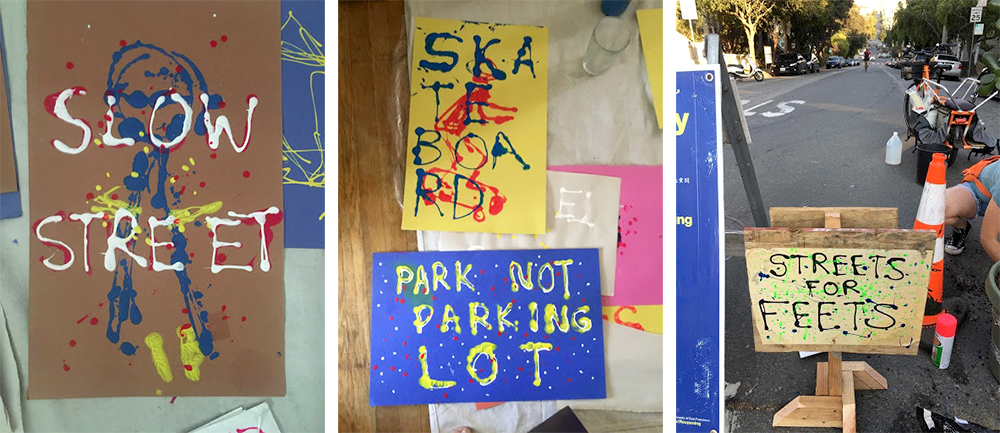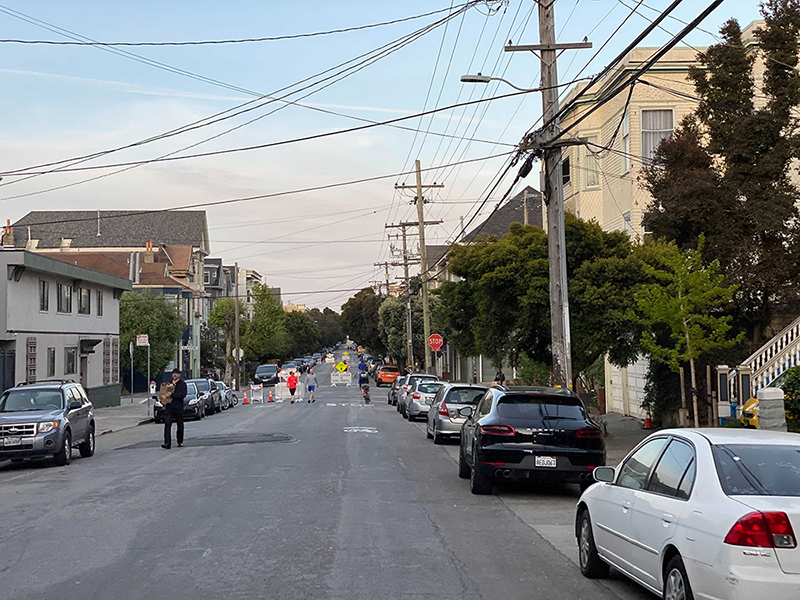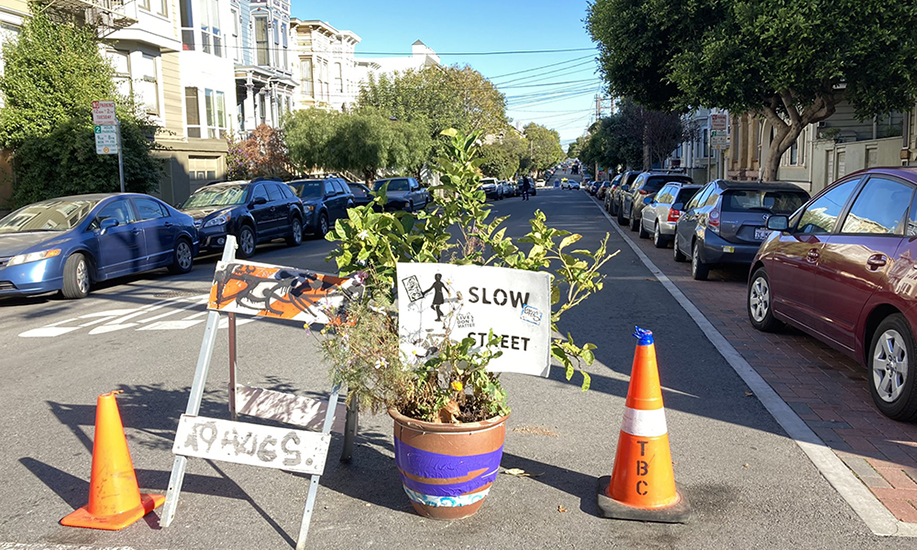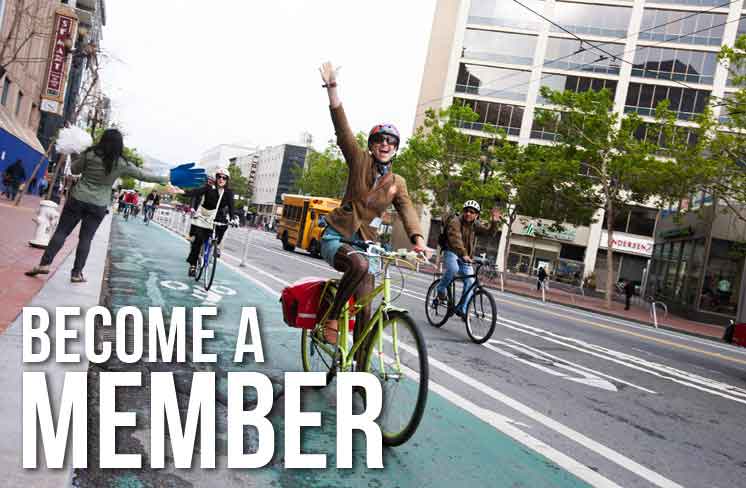Photo: Peter Hartlaub on Twitter
When you look at it, Slow Streets might not seem like much. City crews install barricades held down by sandbags along a corridor with signs that read “ROAD CLOSED TO THRU TRAFFIC.” Yet, nearly a year since its first implementation, Slow Streets have transformed the way we look at our streets. They’ve become places of play and communal spaces we share and care for collectively. We love the way our San Francisco Bicycle Coalition members have championed Slow Streets, and there are no better stewards than Jessica Jenkins and Anthony Ryan.
“I live on Haight Street and was thrilled when Page Street, one block over, became a Slow Street,” said Jessica. When she learned that the City was backlogged trying to install barricades and signs, she took action herself. “I’m into tactical urbanism, so I made a sign stencil and pumped out several spray-painted foam board signs and used my cargo bike to haul a series of large plants to intersections. It became part of my daily pandemic routine to check up on each intersection, water plants, and replace broken pots and missing signs.”
Page Street quickly became one of the most celebrated Slow Streets in the city. From cello concerts to public art, neighbors like Jessica are turning these spaces into much more than streets. One artist who’s added his talents to Page Street is Jessica’s partner, Anthony Ryan. “I’ve contributed artworks and other additions myself to illustrate and celebrate the new uses residents have found while using the street,” he shares.

Street art by Anthony Ryan

Scenes on Page Street (Photo: Ira Kaplan)
The impact that Slow Streets has had on our city is drastic, especially in comparison to bike safety projects that require more time and money. For members like Jessica, this new process of opening streets to people rather than cars has brought hope for what can be done faster in the years to come. “Building a complete bike network block-by-block has been excruciatingly slow and expensive,” said Jessica. “Within a few months, Slow Streets massively improved that network and opened up safer biking throughout the city. There’s still a lot of work to do until kids in Bayview, Tenderloin, Excelsior, can safely roll to GGP and Ocean Beach, but I believe it can happen in months instead of decades with Slow Streets.”
After Slow Streets launched last April, the SF Municipal Transportation Agency (SFMTA) conducted surveys to see how this new program was doing. The response was overwhelmingly positive, with 86% of local residents wanting to see their corridors become a permanent Slow Street. That’s why your San Francisco Bicycle Coalition is thrilled that the SFMTA has announced Page, Sanchez and Shotwell streets are the first three being considered for permanence.
As corridors become permanent, barricades and sandbags won’t cut it. Anthony recommends more permanent infrastructure with barriers installed at key intersections. “The City needs to address the lack of barriers at major cross streets where they are most needed, like Page and Masonic or Page and Divisadero.” He adds that left-turn restrictions would go a long way to making sure those corridors are safe, especially for biking. The City can go beyond design too. “SFMTA should work with interested nonprofits to create an art program that would commission artists to create works that celebrate Slow Streets and make them more inviting,” he says.
If you’re like Jessica and Anthony, join our campaign to make Slow Streets an even more successful program as we fight to make sure these transformative spaces become permanent. As the program looks to expand in the coming months, we’ll need your help to win approvals and be stewards of our Slow Streets. Join the campaign today.


